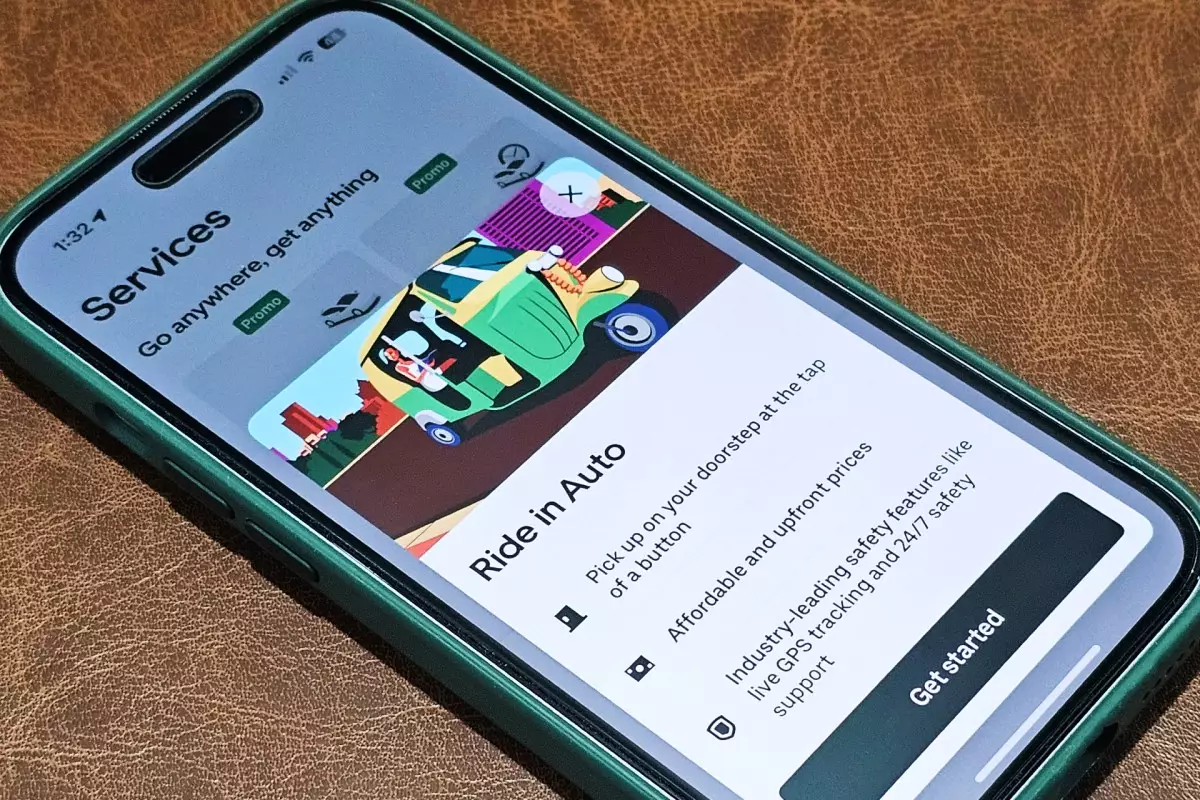Uber, once the undisputed leader in the ride-hailing sector, is adjusting its business strategies in India to tackle fierce competition. The arrival of local rivals like Rapido and Namma Yatri has compelled Uber to reassess its operational approach, particularly in the realm of three-wheeled motorized rickshaws, which form a crucial part of India’s transportation ecosystem. The shift from a commission-based to a daily fee model not only highlights Uber’s adaptive strategies but also raises questions about the sustainability of its operations in an increasingly competitive market.
Traditionally, Uber charged drivers a commission that ranged from 25% to 40% of each fare. However, under the new paradigm, auto-rickshaw drivers will pay a daily usage fee between $0.23 to $0.46, depending on their city. This change reflects Uber’s response to operational challenges and market pressures. By abiding by a subscription-like model akin to its competitors, Uber aims to simplify financial transactions for drivers, alleviating some of the pressure they face under a commission-based system. It is a deliberate pivot towards a structure that promises greater predictability for both drivers and riders.
However, this move also introduces an array of complexities. Drivers will no longer receive instant payments through the app, as riders will be required to pay them directly in cash or via the Unified Payments Interface (UPI). The elimination of Uber credits and promotions for auto-rickshaw trips could negatively impact customer loyalty and undermine the convenience that many riders associated with the service. Furthermore, without a set fare shown at the end of the trip, riders may be left to negotiate prices, potentially leading to disputes over fares. This new dynamics introduce an unpredictability that may deter some riders.
Uber’s adventures in the Indian market began in 2015 with the launch of its auto-rickshaw service, quickly halted soon after due to operational challenges. It wasn’t until 2018 that the service re-emerged, suggesting a trial-and-error approach as the company sought to tailor its offerings to local preferences. Historically, auto-rickshaws account for approximately 25% of all motorized trips in India, signifying their importance within the broader transportation framework. This rich tapestry of demand should have suggested that the market could support a more sustainable offering from Uber.
Through its subsequent re-launch and the new daily fee model, it appears that Uber is taking a more gradual, observant stance, learning from past mistakes. While the primary objective seems to be capturing market share from competitors, it raises the question of whether Uber is truly committed to serving drivers and riders or primarily focused on maintaining a competitive edge.
The Indian ride-hailing landscape is marked by aggressive competition, with companies like Ola, Rapido, and Namma Yatri vying for dominance. These competitors have successfully established subscription-based models that circumvent the high commission fees typically charged by Uber. This competitive environment necessitates adaptation and innovation from all players involved as each firm aims to carve out its niche in the ever-evolving market.
Given that Uber’s new structure is specifically targeted at auto-rickshaw operators, it remains to be seen how this will affect their core four-wheeler cab services, which are still bound to a commission-based structure. The dichotomy between these two offerings demonstrates how nuanced consumer preferences can shift the corporate strategy of a company. For instance, if this daily fee model proves successful among auto-rickshaw drivers, one could speculate whether Uber might experiment with a similar approach for its four-wheeler services in the future.
Ultimately, Uber’s decision to pivot away from its traditional commission-based model reflects an urgent need for adaptation in a fast-evolving marketplace. While the daily fee structure may offer advantages for drivers in terms of reduced fees, it also introduces uncertainties for riders. As the company navigates this complex landscape, its commitment to maintaining user safety and satisfaction will be imperative. Riding the waves of competition will undoubtedly continue to drive Uber’s innovations, but the more significant question remains: Will these changes yield a more sustainable and profitable future for the ride-hailing giant in India? The answer lies not only in strategic operations but also in the delicate balance of driver and rider satisfaction in a vibrant, bustling market.

